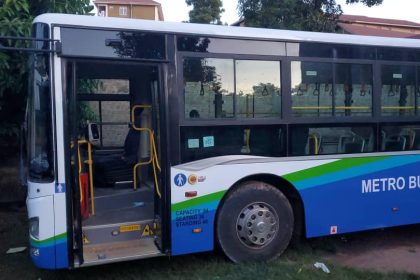Uganda’s new sugar regulatory policy to be spelt out in early 2024
 In recent years, the sugar industry has been mainly characterized by squabbles between the legacy producers and new entrants in the pursuit of locking up out-growers to sustain capacity utilization.
In recent years, the sugar industry has been mainly characterized by squabbles between the legacy producers and new entrants in the pursuit of locking up out-growers to sustain capacity utilization.
Early next year, the Uganda government is to announce the broad strokes of a new sugar sector regulatory policy, primarily based on findings carried out by the Economic Policy Research Centre (EPRC).
In recent years, the sugar industry has been mainly characterized by squabbles between the legacy producers and new entrants in the pursuit of locking up out-growers to sustain capacity utilization.
According to EPRC, which is based at Makerere University in Kampala, they have finalized the Regulatory Impact Assessment (RIA) for the sugarcane sub-sector with the final report due for early 2024.
Uganda is the largest producer of granular brown sugar in the East African Community, but also faces sporadic non-tariff barriers which prevent a consistent export regime. This allows millers to squeeze farmers’ earnings. Total output in 2022 reached 600,000 metric tonnes while the three main export markets are Kenya, Tanzania and Burundi.
The leading legacy producer, Kakira Sugar Limited (KSL) is the country’s top producer of sugar, accounting for half the national sugar production, but as of mid 2022, the country had a total of 14 sugar manufacturers. In the last three years, the EPRC has researched the sugarcane sub-sector with findings pointing to a broken relationship between millers and out-growers. Sugar Corporation of Uganda Limited and Kinyara Sugar are the two other legacy producers.
Explaining the out-growers predicament, one farmer was quoted as saying, “Millers exploit farmers since they reserve rights to set the prices and at the same time participate in the growing of cane. They have established big plantations which they give attention to during the time of harvest.”
Speaking in October at the 11th EPRC Annual Forum on Agriculture and Food Security, Amos Lugoloobi, the Minister of State for planning in the finance ministry said, “Millers have been ‘regulating’ the industry and farmers have been at the receiving end of the value chain. Regulation is a big missing link.”
The RIA forms the basis for the amendment of the Sugar Act 2020 and the revision of the 2010 National Sugar Policy – the two regulatory pieces currently governing the sub-sector.
The EPRC Executive Director, Dr. Sarah N. Ssewanyana said, “The (current) regulatory environment was done with limited consultations with all the stakeholders in the sugarcane sub-sector. We have evidence generated by EPRC and the purpose of the regulatory reforms which we agreed upon after several meetings is to improve the regulatory quality of the sub-sector.”
RIA was funded by the government through the Ministry of Finance, Planning and Economic Development. The process involved extensive consultations with all stakeholders at the lower and highest levels in the industry.
The Sugar (Amendment) Bill, 2023 was tabled in Parliament for first reading by David Bahati, the State Minister in the Ministry of Trade, Industry and Cooperatives, on December 5, 2023.
Section 13 of the Sugar Act established the Sugar Board as the body responsible for implementing the Act. The Board could however not be established because of the Government Policy on rationalization which restricts the establishment of statutory bodies. The Bill now seeks to amend the Act to establish the sugar industry stakeholder council which would comprise representatives of stakeholders in the sugar industry and be funded by a sugar levy charged on millers.
According to EPRC, at least a third of sugarcane out growers quit farming the crop in 2021 as the environment became untenable – frustrated by the market uncertainties, low prices. The cane pricing formula in the Sugar Act 2020 was unusable while the board meant to govern the sub-sector was never put in place. Millers remained with unrestrained powers over farmers, impacting food production, incomes and poverty in cane growing regions.
The RIA process critically assessed the positive and negative effects of the proposals put forward and what the existing regulatory framework could be polished to work. The RIA will also help identify non-regulatory alternatives that are relevant to the sugarcane sub-sector.

 African Heads of state head to South Korea next week for Summit talks
African Heads of state head to South Korea next week for Summit talks
 Kenya calls for speedy resolution of territorial and immigration disputes with Uganda at JMC
Kenya calls for speedy resolution of territorial and immigration disputes with Uganda at JMC
 Uganda-Tanzania announce date for second joint business forum
Uganda-Tanzania announce date for second joint business forum
 Commuter bus operator Tondeka Metro loses city commuter business in web of intrigue
Commuter bus operator Tondeka Metro loses city commuter business in web of intrigue
 Uganda, Nigeria explore deeper economic cooperation
Uganda, Nigeria explore deeper economic cooperation
 Illicit alcohol, the unbridled silent killer in Uganda
Illicit alcohol, the unbridled silent killer in Uganda
